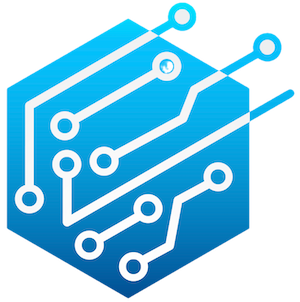In an era where data is generated at an unprecedented rate, the ability to comprehend and analyze long-form content has become paramount. Enter Alibaba Group’s groundbreaking QwenLong-L1 framework, a significant leap towards enabling large language models (LLMs) to reason over extensive inputs. This framework promises to catalyze a wave of enterprise applications requiring nuanced understanding from complex documents, such as intricate legal contracts and comprehensive financial statements. Traditional models, typically limited to limited text segments, have struggled with scaling their reasoning capabilities to encompass longer contexts—a crucial need in industries where detail matters intensely.
Reinforcement Learning: A Quantum Leap for AI Models
Recent advancements in large reasoning models (LRMs) showcase the transformative potential of reinforcement learning (RL) in enhancing problem-solving capacities. When tuned with RL, these models mimic human-like “slow thinking,” where gradual and methodical strategies emerge to tackle intricate tasks. However, this transformation has typically been restricted to short texts, with an upper limit around 4,000 tokens. The prospect of comprehending inputs stretching to 120,000 tokens introduces a compelling challenge: Can AI effectively reason within such expansive contexts, drawing significant insights from each section of text?
QwenLong-L1 seeks to tackle this complex problem head-on. Through an innovative approach, it redefines how models interact with external knowledge while processing detailed information. The introduction of “long-context reasoning RL” suggests a paradigm shift where models are not confined to pre-existing knowledge but must analyze data sourced from extensive inputs. This approach necessitates a sophisticated understanding of context and multi-step analysis—a skill currently underdeveloped in many existing systems.
The Framework of QwenLong-L1
At the core of QwenLong-L1 lies a finely-tuned, multi-stage training process designed to extend the horizon of reasoning capabilities in LRMs. The three critical components of the framework exemplify the detailed thought that has gone into its design:
1. Warm-up Supervised Fine-Tuning (SFT): This foundational phase provides the model with essential training on long-context reasoning tasks. By grounding information effectively, the model begins to refine its understanding of extended contexts, which is crucial in forming sound reasoning chains.
2. Curriculum-Guided Phased RL: This stage introduces a well-structured approach to expanding the model’s capacities. By gradually increasing the complexity and length of the training inputs, QwenLong-L1 ensures that models can adapt to longer contexts without succumbing to the instability often associated with abrupt transitions.
3. Difficulty-Aware Retrospective Sampling: To cultivate resilience and versatility in problem-solving, the framework prioritizes learning from difficult examples. This ensures that the model not only narrows down on routine tasks but is also challenged to explore diverse and complex reasoning pathways, enhancing its overall dexterity in dealing with real-world scenarios.
A Novel Reward System for Enhanced Learning
In a bid to refine how these models learn, QwenLong-L1 introduces a hybrid reward mechanism. Traditional short-context training regimes utilize straightforward rule-based rewards focused on correctness and precision. In contrast, QwenLong-L1 engages an “LLM-as-a-judge” model, which evaluates the semantic alignment of responses with ground truths. This nuanced evaluation allows the model greater flexibility in generating correct answers, even when faced with intricate documents packed with diverse information.
Such a multi-faceted approach to rewards is not merely an academic exercise. In practical applications, where AI performance can significantly impact effectiveness and decision-making, the need for precise yet adaptable responses is paramount.
Empirical Success: Performance Benchmarks
The potency of QwenLong-L1 comes to light through rigorous evaluations using document question-answering (DocQA)—a key task in enterprise AI applications. Through its benchmarks, the QWENLONG-L1-32B model has demonstrated capabilities on par with leading contenders, such as Anthropic’s Claude-3.7 Sonnet Thinking. Not only did it exceed expectations compared to OpenAI’s o3-mini, but even the smaller QWENLONG-L1-14B model outperformed formidable models like Google’s Gemini 2.0 Flash Thinking.
These results signify not just incremental improvements but a potential revolution in how AI can handle synthesis and reasoning, especially vital in data-heavy environments.
Real-World Implications: Applications Across Industries
The advent of the QwenLong-L1 framework harbors immense implications across various sectors. Its ability to dissect and interpret extensive documents can redefine current practices in legally intensive industries by efficiently analyzing volumes of information. Financial fields, too, stand to benefit significantly as this technology could enhance risk assessments or investment evaluations by accurately sifting through lengthy corporate filings. In customer support realms, the ability to map and analyze past interactions would enable more informed and personalized responses, thereby enhancing user experience.
The researchers’ decision to release the code and model weights further amplifies the promise of QwenLong-L1, inviting innovation from practitioners eager to harness its capabilities for broader applications. As we enter a phase where AI continues to mature, frameworks like QwenLong-L1 suggest a transformative future—one where human-like reasoning in dealing with complex, extended inputs is not just aspirational but achievable.


Leave a Reply